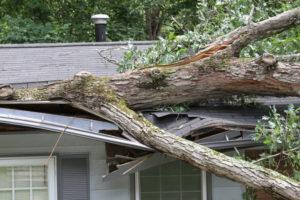 Hurricane Sandy, dubbed “Frankenstorm” by the National Weather Service, barreled over the East Coast this week wreaking yet untold havoc and destruction. As one governor put it, the damage in some places is “unspeakable.” But because of excellent communication and preparation, loss of life and serious injuries seem to have been kept to a minimum. The clean up and rebuilding of hard-hit areas will take time, and our thoughts are with those who are grappling with the storm’s worst impact. But Sandy offers some important lessons on crisis communications and response.
Hurricane Sandy, dubbed “Frankenstorm” by the National Weather Service, barreled over the East Coast this week wreaking yet untold havoc and destruction. As one governor put it, the damage in some places is “unspeakable.” But because of excellent communication and preparation, loss of life and serious injuries seem to have been kept to a minimum. The clean up and rebuilding of hard-hit areas will take time, and our thoughts are with those who are grappling with the storm’s worst impact. But Sandy offers some important lessons on crisis communications and response.
1. Get information out early.
Because of advances in meteorology and satellite technology and delivery, forecasters were able to predict the ferocity and widespread nature of the storm more than a week before its first winds and surf were delivered. As more information and the weather picture became clearer, the Hurricane Center and NOAA put out regular bulletins which were relayed by the news media. In addition, weather maps tracking the storm were available online for anyone to view. The information was clear and actionable.
2. Assess the threat and make preparations.
Those responsible for public safety reviewed the information and began to make preparations, making sure extra supplies were brought in several days early to areas most likely to be most affected. Governments urged citizens to evacuate low-lying areas and businesses secured property and set guidelines for employees. Utilities trimmed more trees and requested additional crews from outside the affected area to help. In the private sector, companies like CBRE, which in the Washington, D.C., area manages more than 40 million square feet of commercial properties, began making preparations more than a week ago. Generators and other equipment were checked for working order, fuel supplies were topped off, and plans were made to have key personnel on-site or nearby during the storm.
3. Take action.
It’s not enough to hear information but also to act appropriately. People in evacuation areas heeded the orders to leave. Others in safer places stayed home, keeping them out of harm’s way and letting first responders deal with emergencies. Schools and governments made their decisions to close early so that people could plan accordingly.
4. Stay in touch and communicate that you care.
Shout-outs to both PNC and Citi for their emails this morning advising me that they were waiving fees and providing access to cash to help people deal with the storm. Both emails communicated the same details, even though in their own ways they could have been stronger. The one from Citi was warmer and made a better impression because it spoke directly to me: “We hope that you and your family are safe. The impact of natural disasters we know can be difficult and we want you to know we are here if you need us.” While I did feel good reading it, if I wanted to act, Citi didn’t tell me how—there was no phone number or email address. PNC’s note was less friendly in tone because they wrote in the third person noting “Our thoughts are with our PNC customers, employees and families who live and work in the communities impacted by Hurricane Sandy…we want to be of as much assistance and support as we can.” However, PNC went a step beyond Citi because they included contact phone numbers and their social media sites so I could take them up on their offer to help.
5. Use multiple forms of communication.
Nothing is more frustrating than when we’re told to get more information by checking a website. If you don’t have power or Internet access, you can’t do that. In this age of email, text, Twitter, Facebook, and LinkedIn, companies and agencies need to deliver information through multiple channels, including that old technology known as the telephone. In addition to providing website updates, for example, PEPCO and COMCAST both sent messages via the phone on storm preparations. And PEPCO’s app for mobile phones not only lets customers report a power outage; they can also see where outages are occurring.
The best way to deal with any emergency is to have a plan before it occurs. At the center of that plan must be communication — delivering information about what is happening, how to prepare, and what to do. If you have examples of the good, the bad and the ugly when it comes to crisis planning and action during Frankenstorm, please let us know so we can all learn for the next unavoidable – but hopefully manageable — crisis.

